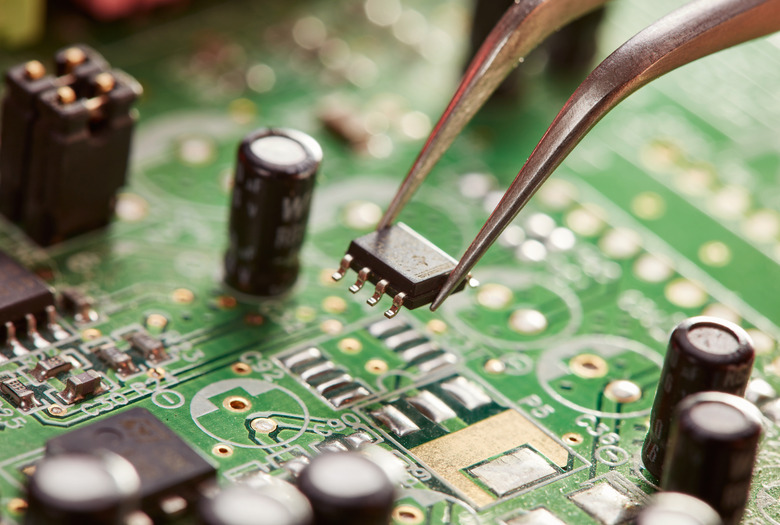What Is The Function Of A Voltage Regulator?
The purpose of a voltage regulator is to keep the voltage in a circuit relatively close to a desired value. Voltage regulators are one of the most common electronic components, since a power supply frequently produces raw current that would otherwise damage one of the components in the circuit. Voltage regulators have a variety of specific functions, depending on their particular application.
Passive Voltage Regulation
Passive Voltage Regulation
A passive voltage regulator may be used if the power supply consistently produces a voltage greater than what the components on the circuit require. This type of voltage regulator essentially consists of a resistor with a particular set of performance characteristics. A passive voltage regulator reduces the incoming voltage to the desired output level and dumps the excess energy as heat. Passive regulators frequently require a heat sink to dissipate this unneeded heat.
Active Voltage Regulation
Active Voltage Regulation
Circuits that require the voltage to increase will require an active voltage regulator. Such voltage regulators typically use some type of negative feedback loop to control the voltage. This means that a voltage outside the desired range causes the voltage regulator to bring the voltage back to its specified range. In turn, this action causes the voltage regulator to stop modifying the voltage of the circuit.
Mains Regulation
Mains Regulation
Voltage regulators on a main AC power line to control the very large voltage changes on these types of circuits. The transformer on a mains line has multiple taps that control the circuit voltage. When the output voltage of the mains regulator drops below a minimum value, the regulator connects to a tap with a higher voltage. Similarly, when the output voltage rises above a maximum value, the regulator connects to a tap with a lower voltage.
AC Voltage Stabilization
AC Voltage Stabilization
AC voltage stabilization refers to the regulation of relatively minor fluctuations in AC voltage. These voltage regulators are routinely used in a home to keep the voltage within the range needed by household appliances. AC voltage regulators use a servomechanism that continually responds to minute changes in the transformer's voltage to keep the house voltage within a narrow range.
DC Voltage Stabilization
DC Voltage Stabilization
DC voltage stabilizers control the voltage in a circuit that uses a battery. They use a shunting device such an avalanche breakdown diode, voltage regulator tube or zener diode to conduct only at a specified voltage. The shunt will carry as much current as needed to output this voltage. In order for a DC voltage stabilizer to operate safely, the current from the power supply may not exceed the maximum safe voltage limit of the shunting device. This is typically accomplished by including a series resistor in the circuit.
Cite This Article
MLA
Robinson, Allan. "What Is The Function Of A Voltage Regulator?" sciencing.com, https://www.sciencing.com/function-voltage-regulator-5380230/. 13 March 2018.
APA
Robinson, Allan. (2018, March 13). What Is The Function Of A Voltage Regulator?. sciencing.com. Retrieved from https://www.sciencing.com/function-voltage-regulator-5380230/
Chicago
Robinson, Allan. What Is The Function Of A Voltage Regulator? last modified March 24, 2022. https://www.sciencing.com/function-voltage-regulator-5380230/
